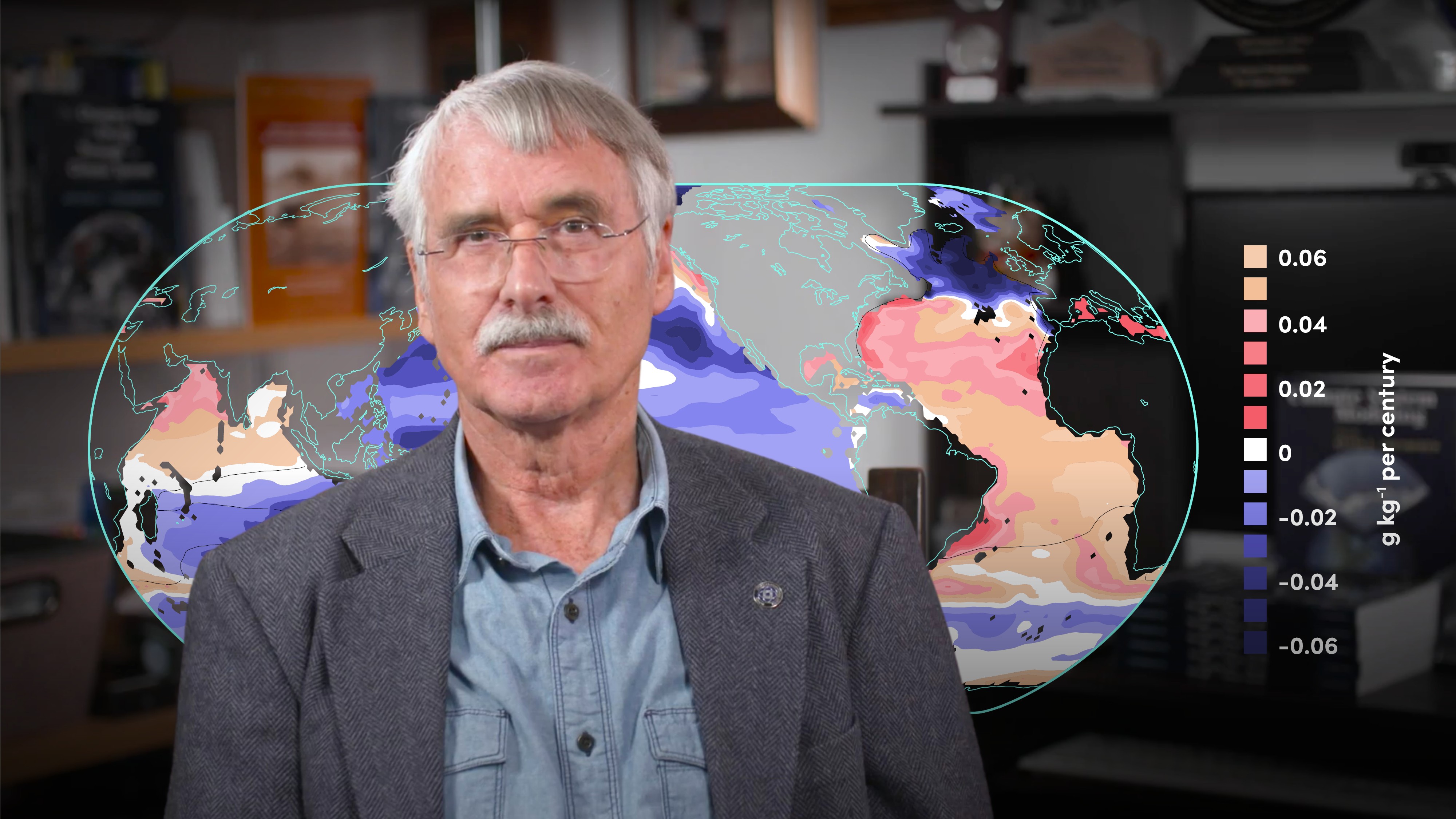
Earth's Energy Imbalance and Climate Change

Kevin Trenberth
Former Coordinating Lead Author of the IPCC
In this video, Kevin introduces Earth’s Energy Budget and the Complexity of the Climate System. He also talks about the increasing pace of the earth's energy imbalance, which is responsible for extreme weather events such as floods, wildfires, heat waves, and storms occurring more frequently than ever.
In this video, Kevin introduces Earth’s Energy Budget and the Complexity of the Climate System. He also talks about the increasing pace of the earth's energy imbalance, which is responsible for extreme weather events such as floods, wildfires, heat waves, and storms occurring more frequently than ever.
Subscribe to watch
Access this and all of the content on our platform by signing up for a 7-day free trial.

Earth's Energy Imbalance and Climate Change
18 mins 51 secs
Key learning objectives:
Understand why there is an energy imbalance on Earth
Outline where excess energy is stored
Understand some of the negative effects of storing this excess energy
Overview:
The concentration of greenhouse gases from human activities has reached 420 parts per million (PPM), and is rising at about 2.5PPM per year. This concentration of gases acts as a blanket around the planet, trapping energy and warming it up, causing an energy imbalance. This excess energy (heat) has to be stored somewhere. It can be stored in the land, the atmosphere, the oceans or ice. Each of these components has different heat storage capabilities and they are all negatively impacted by the excess energy, and given they are all interconnected, any issues are amplified.
Subscribe to watch
Access this and all of the content on our platform by signing up for a 7-day free trial.
Why is there an energy imbalance?
The planet is warmed through incoming solar radiation of about 340 Wm-2, some of this is reflected back into space and some of the energy is absorbed by the surface and then emitted back out as longwave (infrared) radiation). However, not all of the energy that the planet receives is offset back out to space, leaving an energy imbalance of about 0.9 Wm-2 since 2005. 0.9 Wm-2 is equivalent to 500 TW globally, to put that into perspective, total global electricity generation in 2018 was 5.7TW.
Where is the heat stored?
Heat can be stored in the land, the atmosphere, ice and the oceans. However the different components of the climate system contribute on different time scales.
The atmosphere does not have much capability to store heat, it is equivalent to about the top 3.2m of the ocean.
Heat penetration into land is limited and only the top 3 metres or so typically play an active role, with a delay of approximately 2.5 months at a depth of 3 metres.
Similarly, the ice sheets and glaciers do not play a strong role, in these cases most extra energy goes into melting, not raising temperature.
A lot of radiant energy enters the ocean, since it covers 70% of the planet. Seasonal variations in heating penetrate into the ocean through a combination of radiation, convection and mechanical stirring by winds, and on average they involve about 90 metres of the ocean. An overall estimate of the delay in surface temperature response caused by the oceans is 10 to 100 years.
What are the consequences of the excess energy?
Warming the components of the climate system will have negative consequences.
Even though the atmosphere cannot hold much excess heat, there is evidence to suggest that warmer air can hold more moisture, specifically, air warmed by 1℃ can hold 7% more water vapour. This warming in the atmosphere has two consequences, firstly in places where it's not raining, the ground dries out quicker and in places where it is raining, the moisture accumulates and produces heavier rainfalls.
Heat stored in the oceans causes the sea levels to rise due to thermal expansion and melting of ice over land. The rising ocean temperatures also cause ocean salinity to change due to the amplification of the hydrological cycle. Evaporation takes freshwater from the ocean, depositing it in places where it rains more frequently, leading to a scenario of ‘fresh gets fresher and salty gets saltier’. There is also increased ocean stratification with the oceans warming, leading to less heat effectively penetrating the deeper parts of the ocean, limiting the ocean’s ability to store carbon. This will lead global surface temperatures to rise and will limit the vertical exchanges of nutrients and oxygen.
The land is the second biggest absorber of excess energy, but it is heterogeneous and complex. Changing the surface of the planet also affects albedo (the amount of energy reflected back into space), thereby impacting the imbalance further.
The effect of storing heat in ice is that the ice melts! Arctic sea ice has decreased by over 40%, which then causes the sea levels to rise. The effects on ice is one of the most visible aspects when it comes to the energy imbalance. Greenland alone has lost an average of 279 billion metric tons of ice per year. If the West Antarctic ice sheet was to collapse, it could raise global sea levels by approximately 3.2 metres.
Hasn't the climate always ‘changed’?
There is always interannual and natural variability in the climate, but the fact that the energy imbalance is positive, means the world is definitely slowly, but surely, heating up.
We experience interannual variability due to the so-called El Niño–Southern Oscillation (or ENSO) phenomenon. El Niño–Southern Oscillation is made up of two components: El Niño, which is a climate pattern that describes the warming of surface waters in the central and eastern Pacific, and La Niña, which describes the cooling of the surface waters in the eastern Pacific. ENSO is a response of the climate system enabling it to get rid of a bit of excess heat.
Subscribe to watch
Access this and all of the content on our platform by signing up for a 7-day free trial.

Kevin Trenberth
There are no available Videos from "Kevin Trenberth"





























